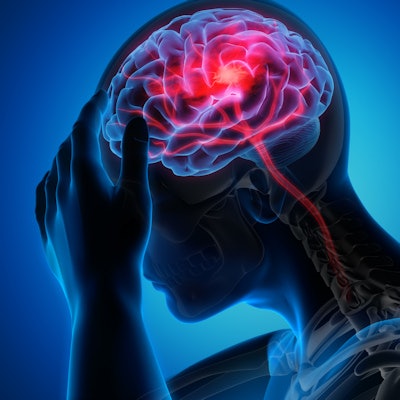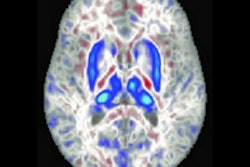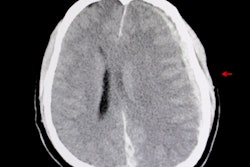
MRI and CT of the brain most likely are being overused in cases of dizziness, both in patients presenting in the emergency department and those presenting in clinics, according to a study published April 7 in JAMA Otolaryngology-Head & Neck Surgery.
The use of head CT and MRI is concerning, since previous research has suggested that only 0.6% to 3.6% of CT scans and 3.9% to 12.2% of MRI exams offer clinically significant findings when it comes to evaluating dizziness, wrote a team led by Dr. Meredith Adams of the University of Minnesota in Minneapolis. And inappropriate use of advanced imaging boosts healthcare costs.
"[The] routine use of neuroimaging, even of the more sensitive MRI, for dizziness is unlikely to be helpful in many cases, and the rates of imaging that we observed appear higher than necessary," the group noted. "Through clinician-, payer-, and policy-level interventions, avoidance of unnecessary imaging tests that are low yield and carry a risk could lower resource use and cost."
Neuroimaging can be expensive, and at times it has been associated with low-value care, the team explained. Dizziness is a very common symptom for which patients report to the emergency room or to outpatient clinics, but best use of imaging for diagnosing the cause of dizziness needs clarification.
"The optimal clinical pathways for an accurate and efficient diagnosis of dizziness remain undefined, but clinicians and patients generally use neuroimaging out of concern for missing underlying intracranial and cerebrovascular lesions," the group wrote. "[But] because high use of health services with potentially limited benefit increases costs and lowers the value of U.S. health care, there are several reasons to reconsider the patterns of neuroimaging use for dizziness."
Adams and colleagues sought to assess neuroimaging use, timing, and cost from initial presentation of dizziness to six months after in outpatient and emergency department settings. They used data from Medicare Advantage claims for 805,454 adults with diagnoses of dizziness between January 2006 and December 2015. Patients underwent CT, CT angiography, MRI, MRI angiography, or ultrasound exams.
In patients who underwent neuroimaging immediately after presenting for dizziness, CT was used 92% of the time. Over the immediate presentation to six-month time frame, head CT represented 47% of all neuroimaging scans, brain MRI represented 25%, cerebrovascular ultrasound represented 15%, and MRI angiography represented 9%.
Total spending on neuroimaging for dizziness in both emergency department and outpatient clinic settings was $88.6 million for the study timeframe, with the various modalities ranging in cost.
| Median neuroimaging exam cost by modality and insurance coverage | |||
| Modality | Total spending | Median commercial insurance cost per exam | Median Medicare Advantage cost per exam |
| Brain MRI with or without contrast | 59% | $320 | $123 |
| Head CT with or without contrast | 16% | $69 | $43 |
| MR angiography head and neck with or without contrast | 11% | $123 | $74 |
| Cerebrovascular ultrasound | 11% | $132 | $144 |
| CT angiography | 2% | $144 | $87 |
| MRI face and neck with or without contrast | 2% | $304 | $362 |
| Temporal bone CT scan with or without contrast | 1% | $186 | $168 |
The study findings underscore the need for a better protocol for diagnosing the cause of dizziness -- particularly regarding the use of MRI, wrote Dr. Jorge Kattah of the University of Illinois in Peoria and colleague Dr. David Newman-Toker, PhD, of Johns Hopkins University in Baltimore in an accompanying editorial.
They explained that CT scans miss more than 80% of posterior fossa strokes and "provide mostly a false sense of reassurance to clinicians when results are normal." And although MRI is more accurate for diagnosing stroke, it also comprises 70% of neuroimaging costs -- despite accounting for just over a third of neuroimaging exams -- "so any solution that relies on switching from a CT scan-based diagnosis to an MRI-based diagnosis is likely to balloon costs," they wrote.
What can be done? Make use of a variety of tools -- including measuring the eye movements of patients presenting with dizziness -- to improve bedside diagnoses in both the emergency department and clinic settings, according to Kattah and Newman-Toker.
"[There are] many options [for diagnosing the cause of dizziness], including telemedicine, decision support tools, machine learning, targeted education, practice guidelines, quality metrics, payment incentives, and eye movement recordings via video-oculography," the two noted.



















